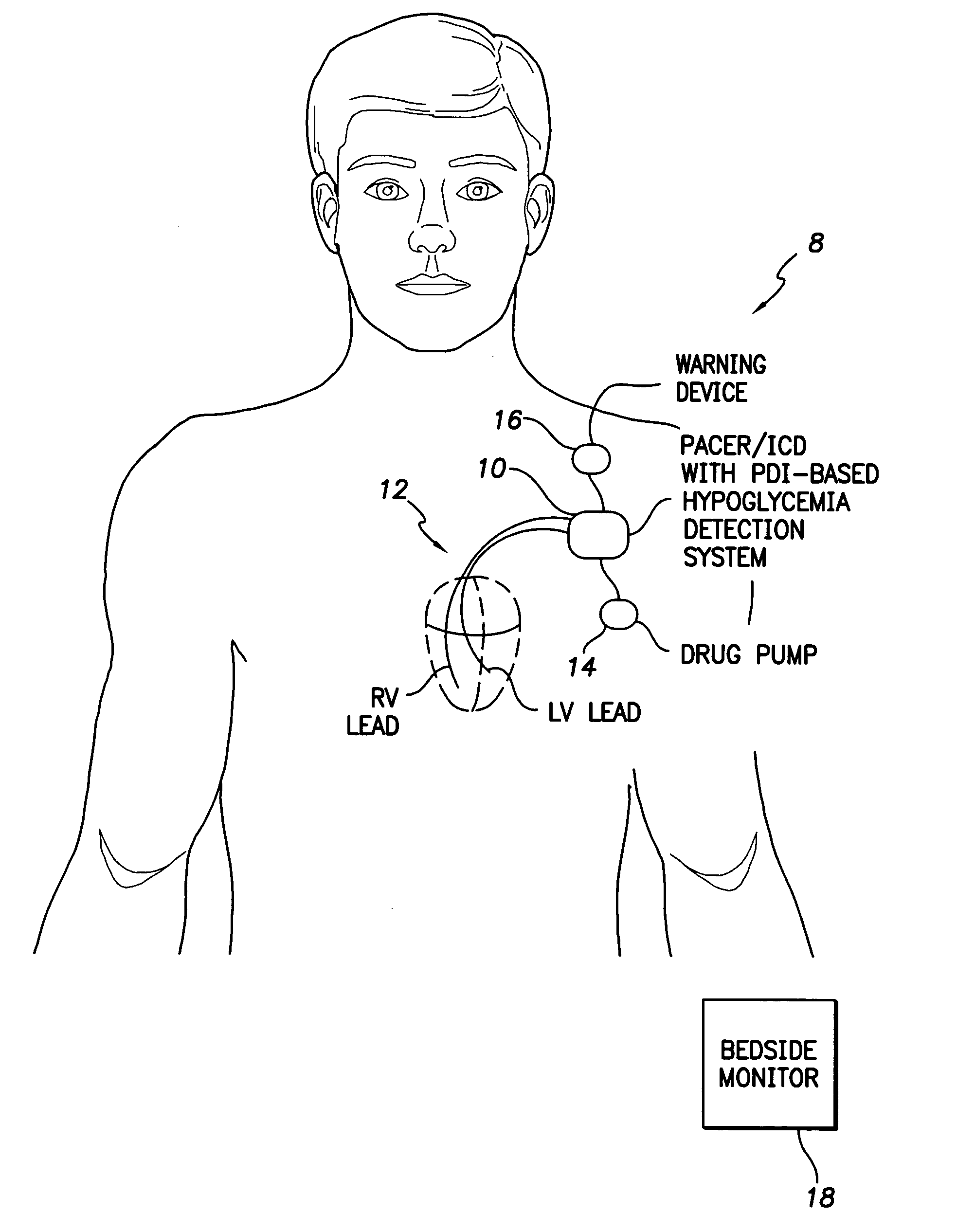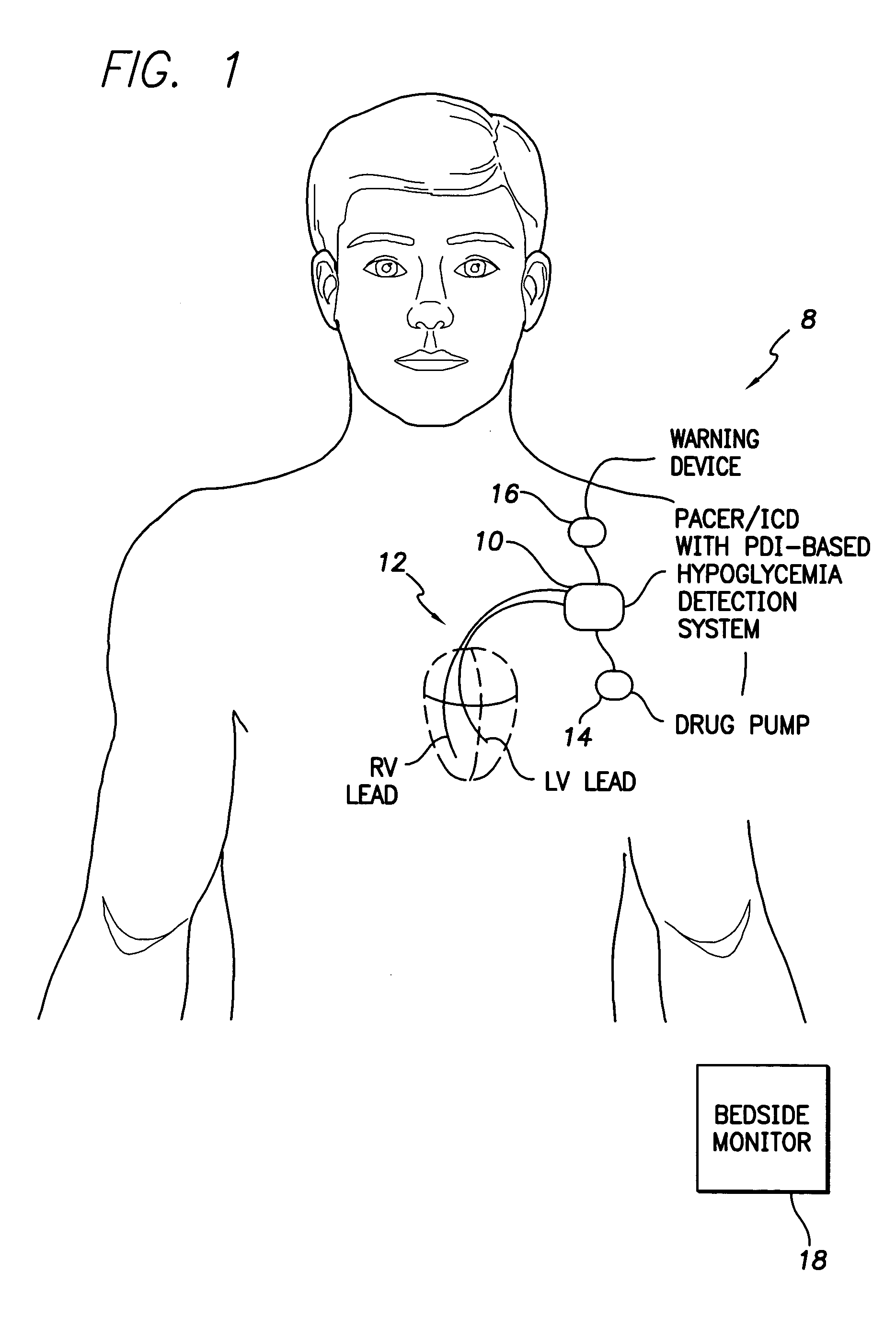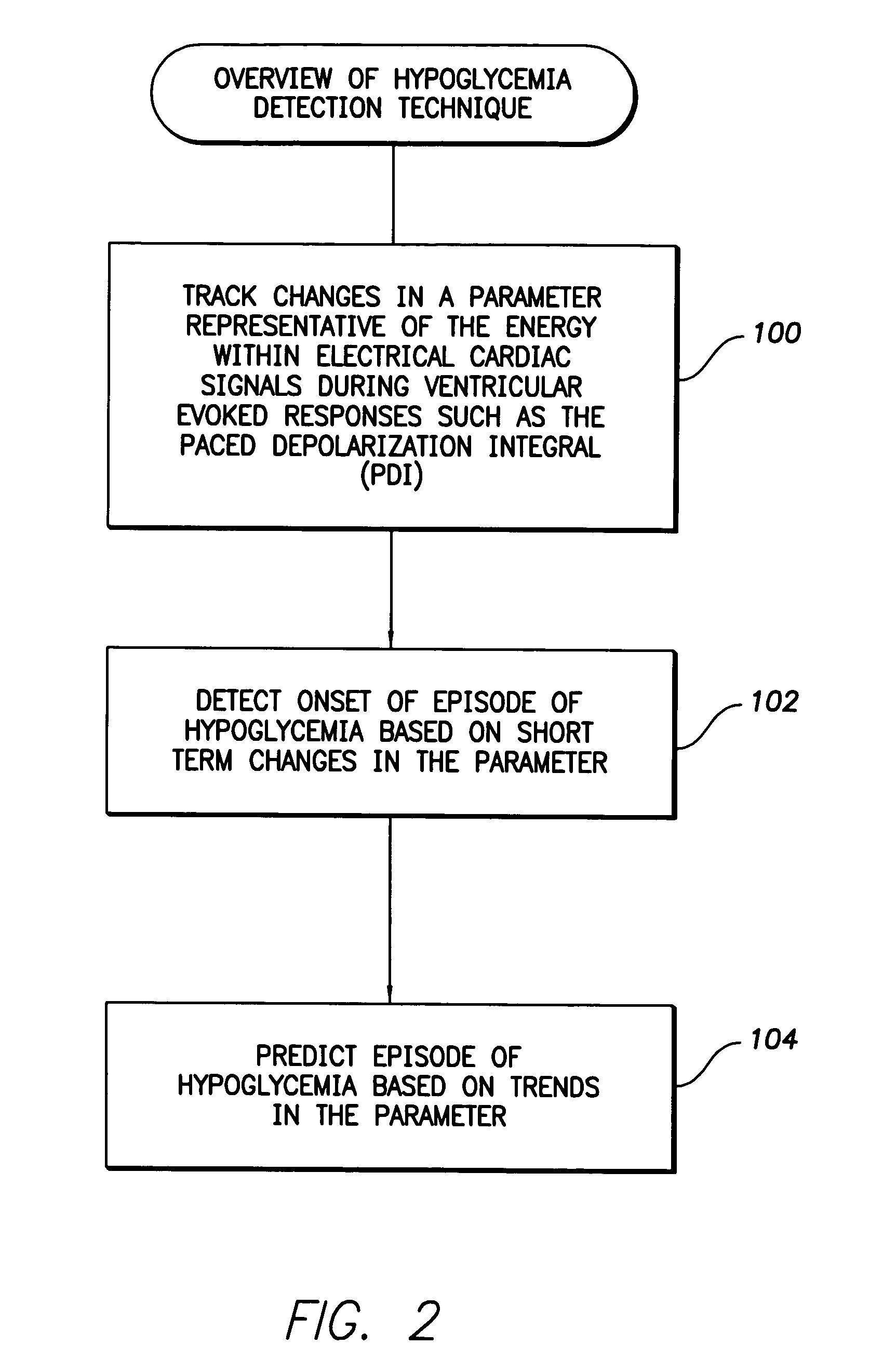System and method for detecting hypoglycemia based on a paced depolarization integral using an implantable medical device
a technology of depolarization integral and implantable medical device, which is applied in the field of implantable medical device technology, can solve the problems of limiting factors in achieving good glycemic control, increased risk of malignant ventricular tachycardia, coma and irreversible brain damage, etc., and achieves better glycemic control in the patient.
- Summary
- Abstract
- Description
- Claims
- Application Information
AI Technical Summary
Benefits of technology
Problems solved by technology
Method used
Image
Examples
Embodiment Construction
[0025] The following description includes the best mode presently contemplated for practicing the invention. The description is not to be taken in a limiting sense but is made merely for the purpose of describing the general principles of the invention. The scope of the invention should be ascertained with reference to the issued claims. In the description that follows, like numerals or reference designators will be used to refer to like parts or elements throughout.
[0026] Overview of Implantable System
[0027]FIG. 1 provides a stylized representation of an implantable medical system 8 capable of: detecting hypoglycemia in a patient in which it is implanted and delivering appropriate warnings or insulin therapy. System 8 includes a pacer / ICD 10 or other cardiac stimulation device that incorporates internal components, shown individually in FIG. 8, for detecting and / or predicting hypoglycemia based on PDI derived from electrical cardiac signals sensed via a set of leads 12. (In FIG. ...
PUM
 Login to View More
Login to View More Abstract
Description
Claims
Application Information
 Login to View More
Login to View More - R&D
- Intellectual Property
- Life Sciences
- Materials
- Tech Scout
- Unparalleled Data Quality
- Higher Quality Content
- 60% Fewer Hallucinations
Browse by: Latest US Patents, China's latest patents, Technical Efficacy Thesaurus, Application Domain, Technology Topic, Popular Technical Reports.
© 2025 PatSnap. All rights reserved.Legal|Privacy policy|Modern Slavery Act Transparency Statement|Sitemap|About US| Contact US: help@patsnap.com



